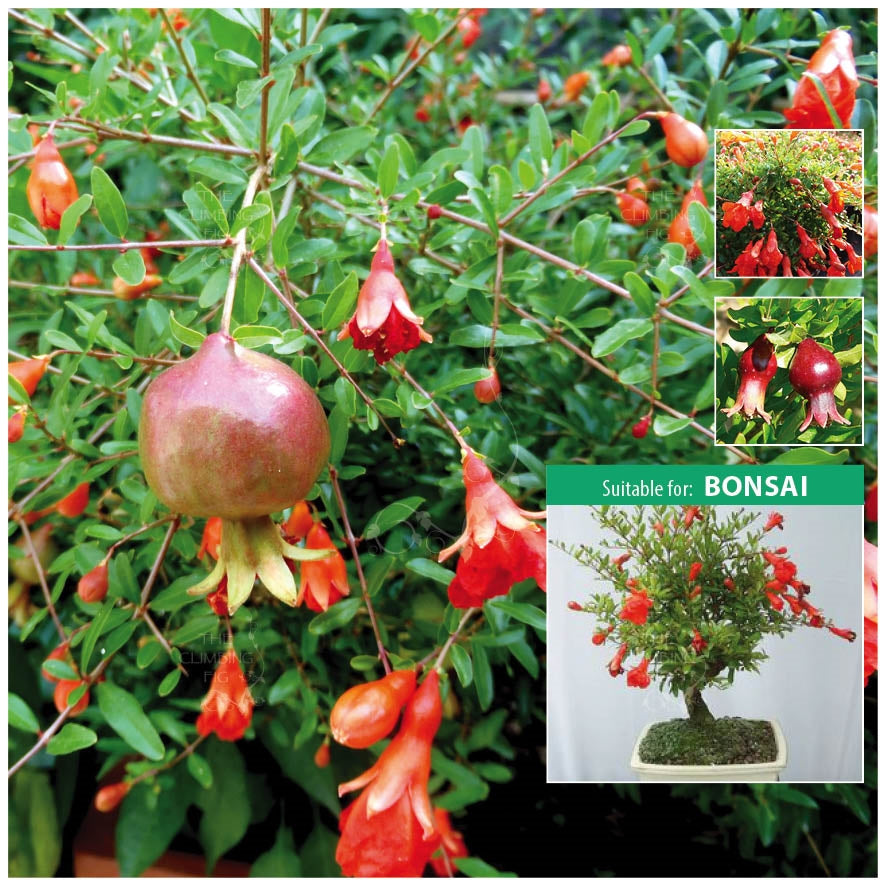Welcome to the enchanting world of decorative pomegranate trees! These striking plants not only add a splash of vibrant color to your garden but also bring a sense of tranquility and exotic charm. Having grown one myself, I’m excited to share my insights, tips, and experiences that will help you cultivate these beautiful trees in your outdoor space.
Table of Contents
- 1. Introduction to Decorative Pomegranate Trees
- 2. Types of Decorative Pomegranate Trees
- 3. Benefits of Growing Decorative Pomegranate Trees
- 4. How to Plant a Decorative Pomegranate Tree
- 5. Care and Maintenance of Pomegranate Trees
- 6. Common Issues and Solutions
- 7. Comparing Decorative Pomegranate Varieties
- 8. Conclusion
- 9. FAQs
1. Introduction to Decorative Pomegranate Trees
The pomegranate tree, scientifically known as Punica granatum, is a small deciduous tree or shrub native to the Mediterranean region. It is renowned for its stunning orange-red flowers and jewel-like fruit, making it a popular choice for ornamental gardens. With a height ranging from 5 to 10 feet, this tree can be grown as a shrub or trained into a small tree, depending on your preference.
Personal Experience: My Journey with Pomegranate Trees
When I first decided to plant a decorative pomegranate tree, I was captivated by the vibrant colors and beauty of the flowers. Over the years, I’ve learned how to nurture and care for my tree, witnessing the transformation from flowers to fruit. Each year, I eagerly anticipate its blossom and the rich, sweet flavor of the pomegranates that follow.
2. Types of Decorative Pomegranate Trees
There are several varieties of pomegranate trees, each offering unique features and benefits. Here’s a brief overview of the most popular types:
Common Varieties
- Wonderful: The most popular variety for fruit production.
- Angel Red: Known for its large, sweet fruit and attractive foliage.
- Californian Sweet: Ideal for warmer climates with a sweet flavor.
- Pink Satin: Features delicate pink flowers and a compact growth habit.
- Red Silk: A hybrid known for its ornamental appeal and vibrant flowers.

3. Benefits of Growing Decorative Pomegranate Trees
Growing a decorative pomegranate tree offers numerous advantages:
Aesthetic Appeal
The bright orange-red flowers and glossy green leaves create a picturesque sight in any garden. Pomegranate trees can be a focal point in your landscape design.

Fruit Production
Besides their ornamental beauty, many varieties also produce edible pomegranates. You can enjoy the health benefits of this superfruit, which is packed with antioxidants.
Wildlife Friendly
Pomegranate trees attract pollinators like bees and butterflies, enhancing biodiversity in your garden.

4. How to Plant a Decorative Pomegranate Tree
Planting a pomegranate tree is relatively easy if you follow these steps:
Step-by-Step Guide
- Choose the Right Location: Pomegranates thrive in full sun, so select a spot that receives at least 6-8 hours of sunlight daily.
- Prepare the Soil: Well-draining soil is essential. Amend the soil with compost to improve fertility.
- Planting the Seedling: Dig a hole twice the width of the root ball. Position the tree and fill the hole with soil, ensuring the root collar is level with the ground.
- Watering: Water thoroughly after planting and continue to keep the soil moist for the first few weeks.
- Mulching: Apply mulch around the base to retain moisture and suppress weeds.

5. Care and Maintenance of Pomegranate Trees
To ensure your pomegranate tree flourishes, here are essential care tips:
Watering Requirements
Pomegranate trees prefer deep watering. During the growing season, water them once a week, reducing frequency in winter.

Fertilization Schedule
Fertilize with a balanced fertilizer every spring as the tree begins to leaf out.
Pruning Techniques
Prune your tree in late winter to early spring to remove dead or crossing branches and maintain its shape. This helps improve air circulation.

6. Common Issues and Solutions
Like any plant, pomegranate trees can face challenges. Here are some common issues and how to address them:
Pests and Diseases
| Pest/Disease | Symptoms | Solution |
|---|---|---|
| Aphids | Leaves curling; presence of sticky residue | Use insecticidal soap or neem oil |
| Pomegranate Fruit Borer | Holes in fruit; early fruit drop | Remove infected fruits and apply appropriate pesticides |
| Root Rot | Yellowing leaves; wilting | Ensure proper drainage; avoid overwatering |

7. Comparing Decorative Pomegranate Varieties
Here’s a comparison table to help you choose the most suitable variety for your garden:
| Variety | Height | Flower Color | Fruit Size | Sweetness Level |
|---|---|---|---|---|
| Wonderful | 10 ft | Bright Red | Large | High |
| Angel Red | 8 ft | Coral Pink | Medium | Very High |
| Pink Satin | 6 ft | Pink | Small | Medium |
8. Conclusion
Decorative pomegranate trees are a beautiful addition to any garden, providing not only stunning aesthetics but also delicious fruit and a welcoming environment for wildlife. By following the tips outlined in this guide, you can enjoy the delights of your very own pomegranate tree. Happy gardening!
9. FAQs
What climate is best for growing pomegranate trees?
Pomegranate trees thrive in warm climates, ideally in USDA zones 8 to 11.
How long does it take for a pomegranate tree to bear fruit?
Most pomegranate trees will start to bear fruit 3-4 years after planting.
Can pomegranate trees be grown in pots?
Yes, dwarf varieties can be successfully grown in pots, making them an excellent option for patios and small spaces.
What should I do if my pomegranate tree is not blooming?
Ensure it receives adequate sunlight and proper watering. Lack of nutrients could also prevent blooming, so consider fertilizing.